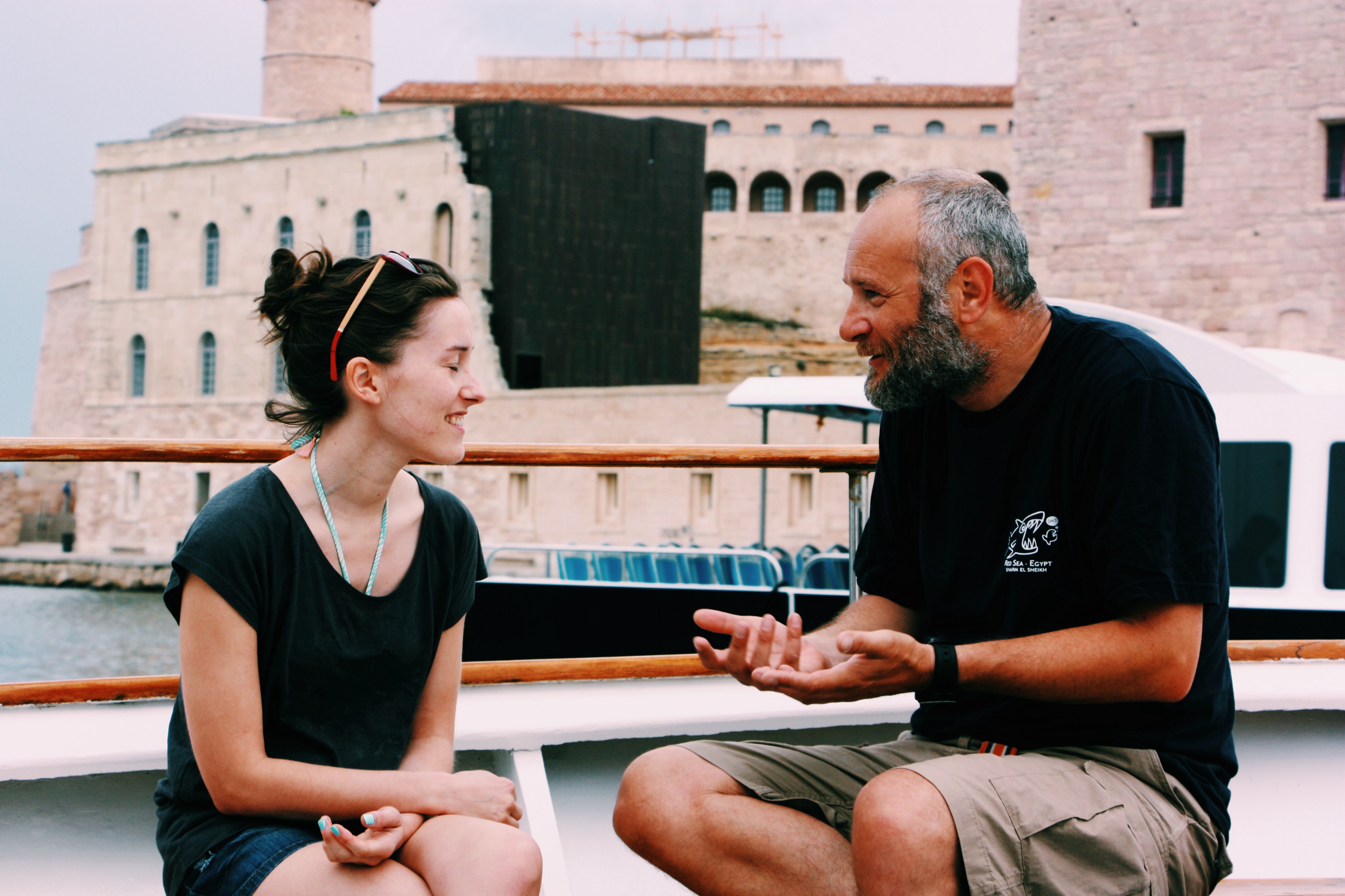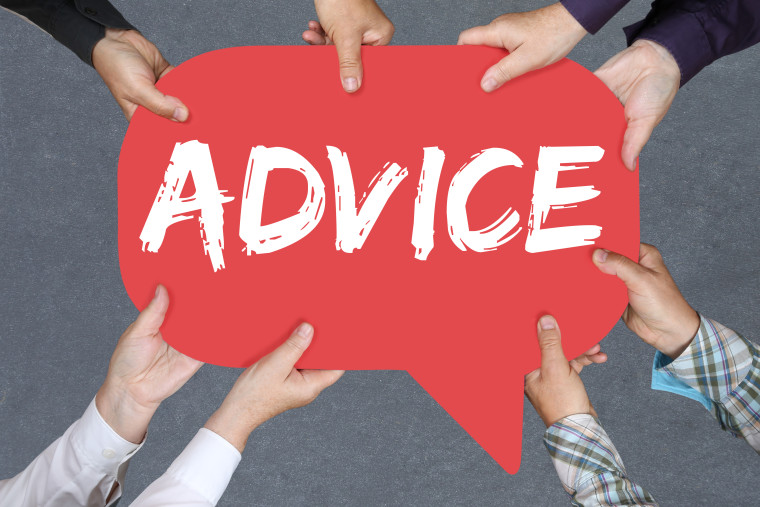

The Right Way to Give Helpful, Actionable Advice
Offering advice is one of those things that seems simple—until it isn’t. Whether you're aiming to lead a team, coach someone toward growth, or build trust as an entrepreneur, learning how to offer guidance that truly resonates is a crucial skill.
But when you deliver advice poorly, the consequences can be serious. You risk sounding patronizing, offending the other person, or worse—completely missing the opportunity to help them take meaningful action. And in a world full of noise, advice that doesn't land is just another empty soundbite.
I always try to remind myself of one essential truth: I don’t have all the answers.
There’s no universal script, and what worked for me may not work for someone else. That’s why humility is critical when offering wisdom. Removing your ego from the equation actually amplifies the value of what you have to say. When you're not clinging to being right, you open up space for connection—and for real impact.
Start With a Story That Sticks
Dry instructions and random statistics rarely move people to act. But stories? Stories stick. They have the power to humanize your message, to breathe life into your ideas, and to make even complex concepts feel familiar and digestible.
Every truly memorable piece of advice I've ever heard was wrapped inside a story. That's what people remember—and that’s how they remember the advice itself.
Personally, I can’t retain numbers or percentages no matter how important they seem. But share a moment—an actual lived experience—and it stays with me for years. That’s why storytelling is essential in any form of advice giving. Whether you're offering career direction or emotional support, people connect to moments, not manuals.
That said, keep it lean. This isn’t an invitation to unload your life history in one sitting. Break your story into parts: what happened, what it taught you, and how it connects to the other person’s current struggle. Some of the most effective communicators—think TED Talk speakers—are masters at this structure. They don’t talk at you; they take you somewhere with them.
Break It Into Digestible Pieces
Complicated advice overwhelms people. When you try to squeeze a whole seminar’s worth of insight into one conversation, you lose your audience.
Simplify. Divide your guidance into bite-sized, actionable ideas. Focus on two or three strong takeaways—something they can remember and maybe even repeat later. Think in patterns. Personally, I often use the power of threes: three actions, three principles, three steps. It feels natural, structured, and easy to recall.
Ask yourself: If they forget everything else I said, what do I want them to remember? Lead with that. Advice is most powerful when it's not only true—but also easy to carry around in your pocket.
Create a Solid Structure Behind Your Words
Advice is a lot like a good article or talk—it needs a clear beginning, middle, and end.
Your introduction sets the context, the body offers the key ideas, and the closing emphasizes the lessons they should walk away with. Without that framework, your message can feel scattered and get lost in translation.
Be intentional with how you build your advice. Should you start with the most pressing point? Should you walk them through a timeline of events to get clarity? Consider how people naturally process information. A logical flow makes your message easier to absorb—and harder to forget.
Think of advice like a mental map. A messy map gets people lost. A clean one shows them the path.
Lead With Respect—Always
Every now and then, I get messages from people asking shockingly personal questions—“Should I quit everything and disappear?” or “Should I give up on life altogether?”
These moments remind me just how powerful and sensitive advice can be.
When someone opens up to you, treat that vulnerability with care. Not everyone has your strength, and not everyone’s been through what you’ve survived. So don’t talk down to them. You don’t need to have lived their story to treat them with dignity. Empathy goes further than you think.
And remember, you have your own battles too. You’re not perfect, and that's a good thing—it makes you relatable. When people feel respected by you, they’re far more likely to listen to what you have to say—even if they don’t agree with all of it.
Respect is the doorway through which real change can walk.
Don’t Waste Time—Cut to the Chase
Let’s face it: attention spans today are microscopic. Especially if your audience includes younger people or those overwhelmed by their situation.
That’s why getting to the core of your message quickly is essential. You can have the most brilliant insight in the world, but if you bury it under fluff or rambling, it’ll be ignored.
Get to your point without unnecessary buildup. You can even pre-frame it: “This will only take two minutes to explain, but I think it could help.” That kind of clarity gets people to perk up.
Your advice isn’t about you. It’s about helping someone take action, think differently, or feel a little more seen. Drop the filler. Keep what matters.
Let It Uplift and Motivate
Advice that lifts people up is magnetic. It draws them in, makes them feel seen, and gives them the courage to keep going.
But inspiration, by itself, isn't enough. That energy has to translate into clarity and movement. Motivation without direction is just noise.
So, yes—aim to inspire. But pair it with something practical. A nudge toward action. A lens that makes their options feel doable. Real inspiration says, “You’ve got this—and here’s how you might start.”
That’s the kind of advice people remember. That’s the kind of advice they act on.
Draw From Your Own Life—It’s Your Secret Advantage
We’ve already talked about the value of storytelling—but there’s a deeper layer here: your personal experience.
Plenty of people give advice. But few share their own stories with honesty. Your life—the ups, the failures, the messy pivots—is your most original resource. Nobody else can replicate it.
When you share how you handled something similar, you create a bridge. People stop feeling alone. They feel less like you’re preaching, and more like you’re walking beside them.
If you plan to build a career or business around helping others, understanding the value of your own experience is crucial. You don’t need dramatic stories—just real ones. Trust me, we all have moments worth sharing. You do too.
Relate Everything Back to Their Core Problem
It’s easy to give generic advice. We’ve all done it—offering recycled ideas or cookie-cutter solutions without digging into what the person is actually struggling with.
But the advice that really hits home? It’s the kind that speaks directly to the listener’s problem. The one they might not even know how to articulate. That’s when your words carry weight—when the person hears them and thinks, “Wow, that’s exactly what I needed.”
The most effective advice I’ve ever given came after asking better questions or doing research to understand what people were really going through.
In one-on-one conversations, you can ask directly. In larger audiences, you can dig through platforms like Quora or Reddit to see what people are really dealing with. Either way, make the effort. Because most human problems fall into familiar themes—we just package them differently in our heads.
So don’t just toss advice into the wind. Tie every idea back to their specific challenge. That’s when it matters. That’s when it lands.
Don’t Forget to Bring Emotion Into It
We’re emotional creatures. Logic matters, yes—but emotion moves us. If you want someone to change their mindset, take a risk, or believe something new, you have to tap into how they feel.
This doesn’t mean faking vulnerability or manufacturing drama. It means letting your real feelings show when you speak. Be honest. Be human. Be brave enough to share what scared you, what broke you, what gave you hope.
We all remember advice given with trembling hands, a cracked voice, or eyes that lit up with conviction. That’s the kind of advice that sticks with us for life.
Emotion is what binds us. It creates resonance. When your advice includes real feelings, it becomes something deeper than information—it becomes connection.
And in a world full of surface-level chatter, connection is what truly changes people.
10 Tips to Advise Wisely
1. Always Ask Before Offering
It might feel like you're just trying to help, but unsolicited advice can come off as intrusive. Before you jump in with suggestions, simply ask: “Would you like some ideas for how to handle this?” This small gesture gives them power—it lets them choose whether they’re ready to hear you out.
And when someone chooses to hear your advice, they’re far more likely to actually take it to heart.
2. Give Them Space to Vent
Sometimes, when people come to you, they don’t want solutions right away—they want to unload. That’s part of the healing. Let them rant, ramble, repeat themselves if they need to. Be the safe place where they can exhale.
Once they’ve gotten it all out, gently shift gears. “Whenever you’re ready, I’ve got some thoughts that might help you move forward.”
3. Speak Truthfully
Avoid pretending to understand something you don’t. You don’t have to say “I know how you feel” if it isn’t true. Instead, say, “I haven’t been in your shoes, but I’m here to try and understand.”
And if you have nothing helpful to say yet? That’s okay too. Silence, when paired with presence, is more comforting than rushed or empty advice.
4. Keep Judgment Far Away
People open up when they feel safe—not when they feel judged.
Resist the urge to say “You should’ve...” or “Why didn’t you...?” The past can’t be changed, and those kinds of phrases only make people feel worse. Instead, try “What if you considered…” or “Have you thought about…” These phrases keep the conversation forward-focused and respectful.
5. Turn It Into a Partnership
You don’t have to play guru. In fact, the best advice often comes from collaboration. Offer your perspective, but check in often: “What do you think about that?” or “Does that feel right to you?”
Make it a two-way conversation, not a monologue. That’s how you help someone find their own way forward—with your support alongside them, not above them.
6. Be a Steady Presence, Not Just a Voice
Sometimes people don’t need answers. They need someone to stand beside them as they figure it out. Be that person.
Whether it’s helping a friend transition careers or comforting someone going through heartbreak, support them through the whole process—not just the decision point.
Long-term encouragement means more than a single suggestion.
7. Never Guarantee Outcomes
Even if you’ve been through a similar situation, don’t make promises you can’t keep. What worked for you might not work for them—and outcomes are always uncertain.
Instead, be honest about the risks, the possible benefits, and the unknowns. That gives the other person the information they need to make a confident, informed choice.
8. Suggest Resources They Can Explore
Books, podcasts, blogs, or articles—recommend something they can read or listen to in their own time. When people discover insights on their own, they feel more empowered to apply them.
Say something like, “I came across this and thought it might help you reflect. No pressure—it’s just there if you want it.”
It’s a soft nudge, not a lecture.
9. Speak From a Place of Care
Sometimes, the most powerful way to give advice is to show you care in small, thoughtful ways.
Maybe it’s a kind message. Maybe it’s showing up for them. Maybe it’s mailing them a book or sharing something that made you think of them. Advice isn’t always verbal—sometimes it’s a gesture that says, “You matter.”
10. Help Them Feel Life Again
Plan something uplifting. A hike. A day trip. A weekend visit. People often find clarity when they’re removed from their everyday environment.
You don’t have to solve their problem. But you can give them space to breathe—and that might be the very thing that helps them figure it out for themselves.








